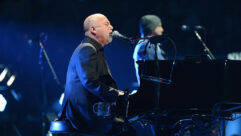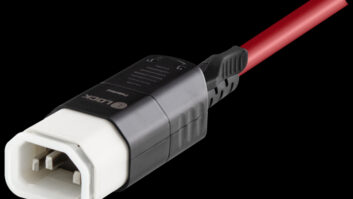Christie’s fabulous diamondSir Charles Wheatstone saw the sparkle in Samuel Hunter Christie’s diamond and made it into his own bridge.
Jan 20, 2001 12:00 PM,
By George Pfisterer Jr. P.E. & George Pfisterer Sr.
George Pfisterer Jr. is President of Pfisterer S
163 years ago in England an obscure physicist, Samuel Hunter Christie, made one of the most startling discoveries ever recorded. He unearthed the most fabulous diamond the world has ever seen. Its intrinsic brilliance has captivated many of the greatest minds from then to now.
Sir Charles Wheatstone, Lord Kelvin, Cromwell Varley and a host of present-day scientists and engineers have reacted to its sparkling rays and in doing so have enriched mankind. Far outshining any diamond nature has produced, Christie’s diamond was produced by a flash of genius. With the strokes of a master he outlined his diamond in a form that has not basically changed since 1833.
But it is not a diamond in the way we usually think of diamonds, not mounted in a ring, a brooch nor a pendant. Still, it assumes this form when it is drawn or sketched. Capable of infinite variations, it is blazing new frontiers even in this modern age we live in.
The diamond is basically a method for measuring the unknown, whether that unknown be a resistance, impedance, frequency, temperature, weight, gas or even an abstract mathematical quantity. In an electrical circuit, the unknown is combined with three other known values until no voltage difference, a null, is between adjacent midpoints of the diamond configuration. (See Figure 1.) The configuration is then balanced, and the precise value of the unknown can readily be determined as a proportion. A DC or AC applied voltage is used to operate the circuit.
Christie (1784-1865) was born in London and was the son of James Christie, the founder of Christie’s Fine Art Auctioneers. He was educated at Trinity College, where he studied mathematics and was active in athletics. Upon graduation, he taught mathematics at the Royal Military Academy for almost 50 years, retiring as a professor in 1854.
He made many contributions to magnetic science, including the effects of temperature upon magnetic forces, the effect of solar rays upon the magnetic needle and terrestrial magnetism. He constantly worked toward the improvement and construction of the magnetic compass. He first described his diamond in 1833 in his paper on the magneto-electric conductivity of various metals.
In this paper, he shows the conduction of various types of wire varies inversely with the length and directly as the square of the wire diameter. The paper was chosen by the Council of the Royal Society as the Bakerian lecture for that year. It was no doubt chosen for his magnetic investigation content rather than the description of his diamond, a tool he probably developed just to measure the wire resistance and conductance.
One of the first scientists to recognize the value of Christie’s diamond was Charles Wheatstone, an English physicist and inventor. As a professor at Kings College in London in the mid 1800s, he popularized the diamond to such a great degree that henceforth it became known as the Wheatstone Bridge. His brilliant career climaxed in 1868, when he was knighted and became Sir Charles Wheatstone. At first the Wheatstone Bridge was used in telegraphy to measure the resistance of telegraph wires and coils. To accomplish this, the conductor of unknown resistance was made part of the bridge circuit with three known resistors completing the configuration and a galvanometer used as a detector. Thus the telegraphers possessed an invaluable tool with which to check their equipment and to locate faulty spots.
In 1865 Cyrus Field was busily engaged in his attempt to lay the first Atlantic cable on the ocean floor from Ireland to Newfoundland. On board the giant steamer “Great Eastern” was a veritable brain trust of scientists, including Professor William Thompson of Glasgow University, designer of the 2,300 mile (3,703 km) cable, and electrical superintendent Cromwell Varley of the Varley Loop, a method for determining faults in long lines. Using a modified Wheatstone Bridge, every inch of the cable was tested before it dropped to the ocean floor. Thompson was later titled Lord Kelvin, and his modified Wheatstone Bridge, now known as the Kelvin Bridge for the measurement of extremely low resistances, did much to insure his prestige. Over the years, many other variations and applications of the Wheatstone Bridge have appeared.
The application of an AC voltage to the bridge makes possible accurate measurement of inductance, capacitance, impedance and frequency. The impedance bridge is one of the most useful test tools for audio systems and is used to measure loudspeaker lines, transfomers, crossover circuits and matching networks.
At radio frequencies, a bridge is used in a reflectometer to measure the forward and reflected power (SWR) in an antenna transmission line. Resistance strain gauges used as the arms of a bridge reflect the weight, force or pressure applied to them. A temperature-sensitive element in one leg of a bridge will precisely measure temperature. Two cells containing a standard sample and a gas under test in adjacent arms of a bridge are used for gas analysis.
Using a balanced RC bridge in the feedback network of an amplifier, a Wien-bridge oscillator is then formed for producing low distortion sine waves, which is the method used in the original Hewlett-Packard sine-wave oscillator.
The Wheatstone Bridge is right at home today working with digital and computer circuits, and future generations will live in a better world because of Christie’s diamond.










